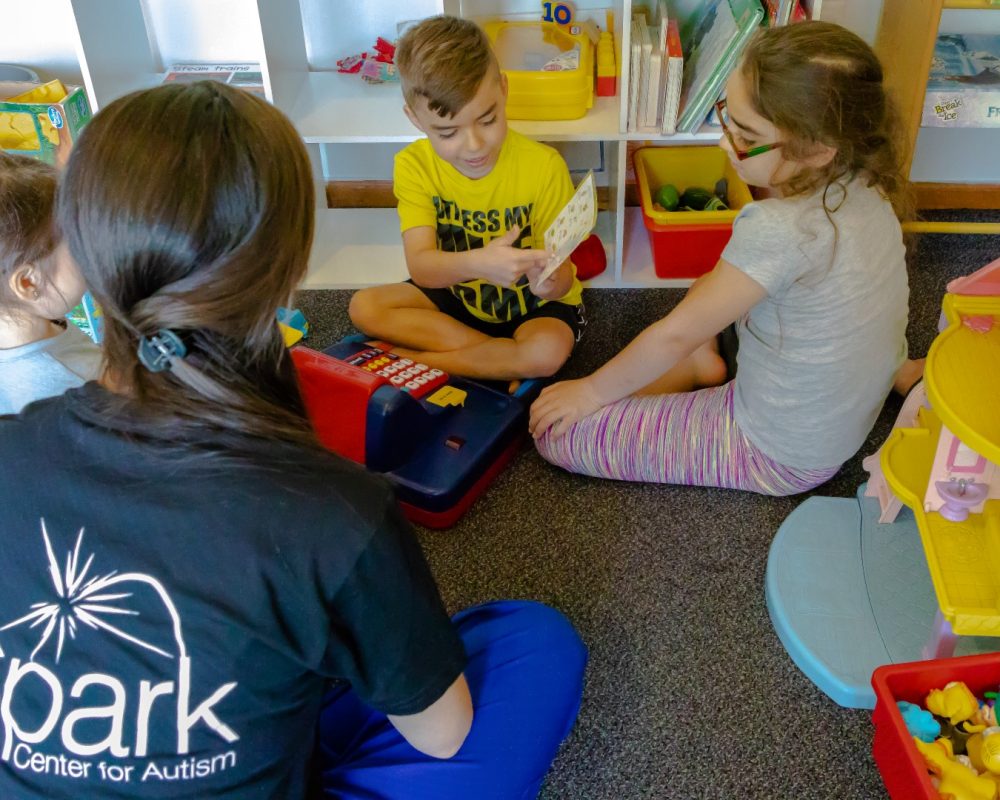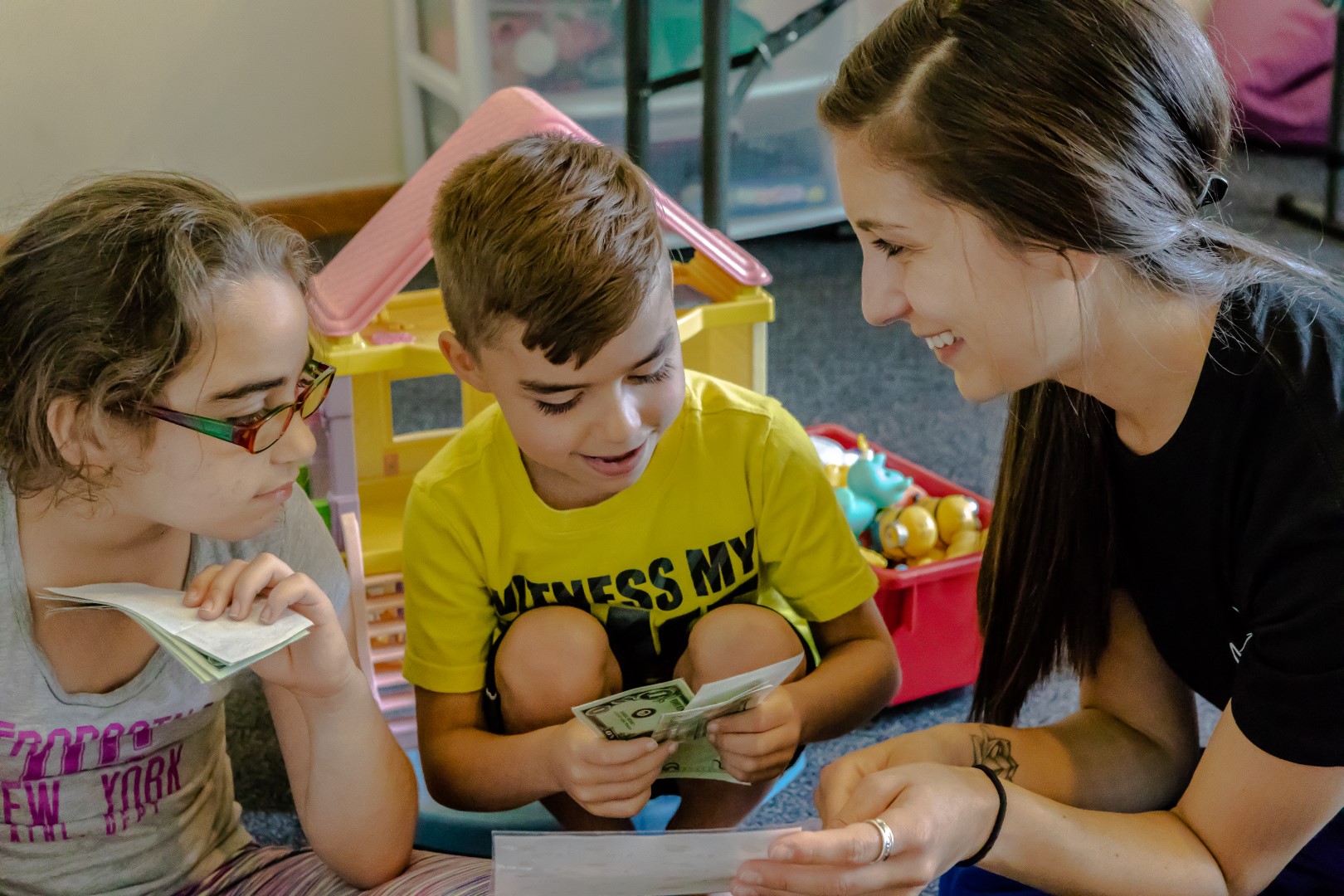ABA

Applied behavior analysis (ABA) is a scientific discipline that studies the relationship between the environment and behavior. As a field, ABA has a commitment to bringing about changes in behavior that enhance and improve people’s lives (applied). Behaviors are defined in observable and measurable terms, and ABA employs objective, data-driven decisions to determine if progress is being made or not on an individual level (behavioral). Data are constantly reviewed to identify systematic, predictable patterns that can be attributed to specific variables in the environment (analytic).
When used for skill acquisition, ABA is an approach that breaks down complex skills into small components, and teaches them through repetition and the principles of reinforcement. It also employs other behavioral principles to shape and maintain socially significant behaviors, and decrease challenging and undesirable behaviors. ABA focuses on improving adaptive behaviors and decreasing behaviors that may interfere with daily living.
What is it used for?
ABA can be used for almost anything. If it is behavior, and it can be observed, the principles of ABA can be used to increase or decrease that behavior. Behavior analysts are committed to improving socially significant behaviors, which can include communication and verbal behavior, social skills, academics, gross and fine motor skills, reading, toileting, dressing, eating, personal self-care and other activities of daily living, and work skills. Many of these skills are delayed or non-existent in individuals with an autism spectrum disorder (ASD).
ABA is recommended and endorsed as an effective intervention for ASD by the US Surgeon General, the National Institute of Mental Health, the National Institute of Child Health and Human Development, the National Research Council, the American Academy of Pediatrics, American Academy of Child and Adolescent Psychiatry, and the American Academy of Neurology, among other national medical organizations and associations.
For more information about our credentialing board, please visit The BACB.
How do we do it and how much is enough?
Spark uses a variety of treatment techniques based on the principles of behavior; interventions range from highly structured (e.g., discrete trial teaching), to more naturalistic (e.g., incidental teaching). While ABA is typically conducted in a 1:1 setting, providing center-based services allows the opportunity to also focus on the necessary skills for transitioning, and targeting the barriers that may prevent a child from being successful in a less restrictive setting (e.g., a classroom), such as self-management and forming relationships with peers.
Every child with autism is unique, and so every intervention at the Spark Center is uniquely tailored to your child’s specific needs. Through years of practice, we’ve perfected our techniques to match what is most effective for the individual and will give them the best chances of success long term.
In 1987, Dr. Ivar Lovaas published a study that reported that 48% of participants, children with ASD, were able to achieve typical development and become indistinguishable from peers, with 40 hours a week of intensive behavioral intervention for at least 2 years. The study also reported that as little as 10 hours a week can still result in socially significant improvements. While there is no single study that can determine the optimal number of hours for each individual child, research does support a minimum of 25 hours per week.

What to Expect
While every child’s programming is individualized and tailored to their needs, there are a few things you can expect to occur throughout treatment.
Initial Assessment
Prior to starting services, we will conduct an initial behavioral assessment on your child to identify his or her specific areas of strength and weakness. The primary assessments we use will break language and related skills down into different skill areas, including expressive language, listener responding, visual perceptual skills, motor skills, and social skills. We will also analyze the barriers that may be affecting your child’s ability to learn, such as non-compliance, aggressive behaviors, prompt dependency, etc. After completing the assessment and determining the baseline of your child’s skills and barriers, within approximately one week (depending on your insurance provider’s requirements), we will write a report describing the results of the assessment, create an individualized treatment plan and make our recommendation for treatment hours per week. Once we review the reports with you, we will finalize your child’s schedule and begin services.
Monthly Updates
Your BCBA will set up meetings and parent training sessions with you to occur at least once per month. In addition, you will receive updates to your child’s treatment plan based on progress met to date.
Re-Evaluations
At least every 6 months, your BCBA will re-assess your child and develop a new treatment plan based on the most up to date results of the assessment, which will be reviewed with you. 3 months into each 6 month treatment period, you may also be provided with an additional report (a “quarterly report”) which will include graphs and descriptions of all current treatment goals.
Scheduling Options
We offer half and full day options for ABA services, typically with a minimum requirement of at least 15 hours per week. Recommended hours will be determined based on a combination of factors, including the results of your child’s autism diagnostic evaluation, the results of the ABA assessment, age, and other services that your child receives.
Services are conducted in 3 hour ‘blocks’ – half day sessions can either be scheduled from 8:30-11:30 or 12:30-3:30, and full day sessions are from 8:30-3:30. In general, we are unable to accommodate a “mixed” schedule (e.g., some full days and some half days).
Process
Ready to start speech therapy for your child? Follow the steps outlined below:
Fill out our Referral Form
Click here to fill out our secure referral form, and someone from our team will reach out with more information about our onboarding process, and any potential wait times. Alternatively, you can give our office a call at 248-238-9772.
Insurance Verification and Paperwork
You will need to ensure that your child has received an appropriate medical diagnosis of Autism. We will verify your insurance benefits, but you are also responsible for knowing your own benefits. If you need assistance with finding out this information, let us know! We are happy to help. In the meantime, we will have you fill out our onboarding paperwork. You can also use this form to help check your benefits.
Schedule the Evaluation
Once you complete the paperwork and we have verified your insurance benefits, we will work with you to schedule the initial assessment, and the follow up meeting with your clinician!


